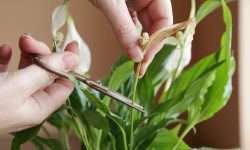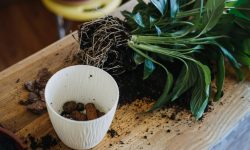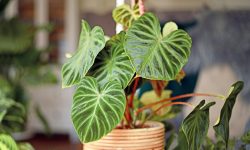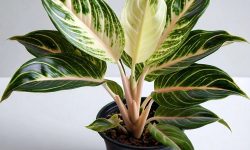Propagating dogwood trees offers gardeners a way to fill their landscapes with vibrant flowers and lush foliage. How to Propagate Dogwood Trees: Expert Tips for Healthy Plants provides clear, actionable guidance for growing strong, thriving trees. Dogwoods brighten gardens in every season, and understanding the right techniques helps each new plant flourish. Choosing healthy parent trees, maintaining proper soil conditions, and giving consistent care ensures young plants develop roots quickly and grow vigorously.
This guide explains practical methods, including seeds, cuttings, and layering, suitable for beginners and experienced gardeners. You will learn how to prepare soil, select the right materials, and monitor young plants to promote healthy growth. Following these tips, you can expand your collection and create a vibrant landscape full of dogwoods. With dedication and careful attention, gardeners can enjoy successful propagation and beautiful trees that enhance the garden for years.
Understanding Dogwood Growth Habits
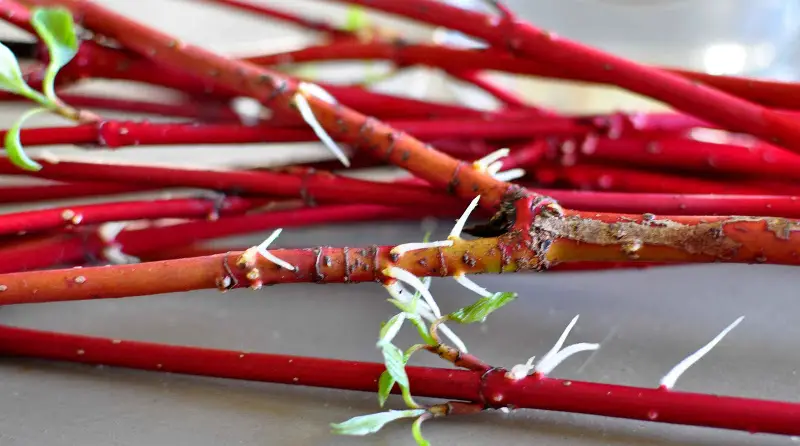
Dogwood trees have unique growth habits that influence how you propagate and care for them. Most species grow slowly, developing dense, branching structures that support abundant flowers. Understanding their natural form helps gardeners plan spacing and anticipate how young plants will mature. Some dogwoods, like the flowering dogwood, produce prominent spring blooms, while others, such as the kousa dogwood, flower later in the season. These differences also affect pruning schedules and fertilization needs. Recognizing growth patterns ensures you select the right variety for your garden and achieve optimal flowering results.
Root systems play a critical role in establishing young dogwoods. They generally develop shallow, fibrous roots that spread widely rather than deeply. This root structure allows the tree to absorb surface moisture efficiently but makes it sensitive to drought and soil compaction. Consistent watering, careful soil preparation, and mulching are essential to protect roots. Disturbing the roots during propagation or transplanting can stress the plant and slow development. Observing root behavior, soil texture, and moisture levels helps gardeners anticipate how well new plants will establish and thrive in the long term.
Environmental factors strongly affect growth and flowering. Dogwoods thrive in well-drained, slightly acidic soil with moderate sunlight. Full sun encourages abundant blooms, but young trees often need partial shade to protect tender shoots. Temperature fluctuations, strong winds, and extreme weather can reduce flowering and weaken the tree. Understanding these preferences allows gardeners to select appropriate planting sites and implement preventive care. By combining knowledge of growth habits, root tendencies, and environmental requirements, you can create conditions that support healthy development and successful propagation. This foundation is essential for producing robust dogwood trees with vibrant blooms.
Choosing the Right Dogwood Variety for Propagation
Selecting the right dogwood variety is crucial for successful propagation and a thriving garden. Different species offer distinct flower colors, bloom times, and growth habits. Flowering dogwoods bloom in spring with pink or white petals, while kousa dogwoods flower later, often producing star-shaped flowers and vibrant fall foliage. Cornus florida and Cornus kousa are popular choices for home gardens because they adapt well to various soil types and climates. Understanding these traits helps gardeners choose a variety that matches their aesthetic preferences and local growing conditions.
When propagating, consider the tree’s growth rate and size at maturity. Some dogwoods remain compact, making them ideal for smaller gardens, patios, or container planting. Others grow larger and require more space to develop fully. Assessing soil requirements, sun exposure, and moisture needs is essential. Selecting a variety suited to your local environment increases the chances of establishing healthy plants and reduces the risk of disease or poor flowering. Gardeners should also check the availability of healthy parent plants with strong root systems and vibrant foliage to maximize propagation success.
Propagation goals also influence variety choice. If your aim is to produce multiple trees with identical traits, selecting a cultivar for cutting or grafting is best. Seed propagation works well for creating genetically diverse plants, though bloom time may vary. Disease resistance and environmental adaptability are additional considerations. By choosing the right dogwood variety, gardeners set the foundation for successful propagation. Careful selection ensures that new trees grow vigorously, develop strong roots, and produce beautiful, long-lasting blooms that enhance the landscape for years.
Propagating Dogwood Trees from Seeds
Propagating dogwood trees from seeds provides an effective way to grow new plants while maintaining genetic diversity. Collect seeds from healthy, mature trees during late summer or early fall when berries are fully ripened. Remove the fleshy fruit and clean seeds thoroughly to reduce mold or pest problems. Stratification, which exposes seeds to cold and moist conditions, helps break dormancy and improves germination rates. Place seeds in a damp medium such as sand or peat moss for several weeks to mimic winter conditions. This process prepares seeds to sprout successfully in spring.
Proper soil preparation is essential for successful seed propagation. Use a well-draining, slightly acidic soil mix to prevent waterlogging and support root development. Sow seeds shallowly, covering lightly with soil, and maintain consistent moisture without oversaturating. Provide partial sunlight or filtered light to encourage healthy seedling growth, while avoiding direct, intense sunlight that can stress or dry out young plants. Monitor seedlings closely for fungal growth, pests, or nutrient deficiencies. Maintaining optimal conditions ensures higher germination rates and stronger seedlings ready for transplanting.
After germination, careful care helps seedlings develop into strong, healthy dogwood trees. Thin crowded seedlings to reduce competition for nutrients and water. Transplant young plants into individual pots when they reach a manageable size, allowing roots to expand without stress. Gradually acclimate seedlings to outdoor conditions before planting permanently in the garden. Protect them from extreme weather, pests, and harsh sunlight during this stage. By following these steps, gardeners can propagate dogwood trees from seeds successfully, producing robust plants capable of thriving and offering stunning blooms for years.
Propagating Dogwood Trees from Cuttings
Propagating dogwood trees from cuttings provides a faster way to produce new plants with traits identical to the parent tree. Semi-hardwood cuttings taken in late spring or early summer have the highest success rates. Choose healthy, disease-free branches approximately 6 to 8 inches long with several leaf nodes. Remove the lower leaves and dip the cut end in rooting hormone to stimulate root growth. Proper selection and preparation of cuttings greatly improve the likelihood of successful propagation and vigorous young plants that thrive in the garden.
Selecting the right propagation medium is essential for root development. Use a well-draining mix of sand, perlite, and peat moss to prevent waterlogging and encourage strong root formation. Plant cuttings shallowly, ensuring at least one node is buried beneath the soil. Maintain high humidity by covering cuttings with a clear plastic dome or bag. Place them in bright, indirect light while avoiding direct sunlight, which can overheat or dehydrate young plants. Mist regularly to maintain moisture, but do not overwater, as soggy soil may lead to fungal growth or rot.
Rooting usually occurs over several weeks, and careful monitoring ensures healthy growth. Once cuttings develop strong roots, transplant them into individual pots with nutrient-rich, well-draining soil. Gradually acclimate young plants to outdoor conditions before permanent planting in the garden. Monitor them for pests and diseases, and provide protection as needed. With consistent care and attention, propagating dogwood trees from cuttings produces robust plants identical to the parent. This method allows gardeners to quickly expand their collection while maintaining desirable flower colors, foliage, and overall tree characteristics for a vibrant and thriving garden.
Propagating Dogwood Trees through Layering
Layering provides a reliable method for propagating dogwood trees while the branch remains attached to the parent tree. This technique allows the cutting to develop roots before separation, which increases the likelihood of successful establishment. Choose a low, flexible branch that can reach the ground easily. Wound a small section of the branch by lightly scraping the bark to expose the cambium. Applying rooting hormone to the wounded area encourages faster and stronger root growth. Preparing a healthy parent tree ensures better results for the new plant.
Prepare the soil where the branch will touch, ensuring it is well-draining, fertile, and slightly acidic. Bend the wounded branch down to the soil and secure it with a U-shaped pin or stake. Cover the wounded section with soil, leaving the tip exposed above ground. Keep the soil consistently moist, as dry conditions can prevent root formation. Partial sunlight works best, as excessive direct light can stress the branch. Regularly check for pests or fungal issues that could hinder growth. Over time, roots begin to form at the wounded area, creating a strong connection with the soil and supporting future independent growth.
After several months, gently check the branch for root development. Once the roots are strong and well-established, sever the connection to the parent tree. Transplant the new dogwood to a prepared location with proper soil, sunlight, and drainage. Continue to monitor young plants for pests, disease, and drought. Mulching around the base helps conserve moisture and regulate soil temperature. By using layering, gardeners can propagate dogwood trees successfully, producing healthy, resilient plants that retain the parent tree’s desirable traits. This method is ideal for beginners and guarantees robust, flowering dogwoods that enhance any garden landscape.
Caring for Newly Propagated Dogwood Trees
Caring for newly propagated dogwood trees is essential to ensure strong growth and successful establishment. Young plants are sensitive to environmental stress, including drought, extreme temperatures, and direct sunlight. After transplanting, water consistently to keep the soil evenly moist, but avoid overwatering, which can cause root rot. Applying a light layer of mulch around the base helps retain moisture, regulate soil temperature, and reduce competition from weeds. Monitoring soil conditions closely supports healthy root development and overall plant vigor.
Protecting young dogwoods from pests and diseases is equally important. Inspect the trees regularly for common issues, such as aphids, scale insects, or fungal infections. Early detection allows prompt treatment with environmentally safe methods, including insecticidal soap or horticultural oils. Avoid using harsh chemicals that could stress delicate young plants. Additionally, provide temporary shading if the young tree is exposed to harsh sun or wind, which can damage tender shoots and leaves. Gradual acclimation to outdoor conditions strengthens the plant and reduces transplant shock.
Fertilization encourages vigorous growth, but it must be balanced. Use a slow-release, acid-forming fertilizer suitable for dogwoods, following the manufacturer’s instructions. Over-fertilizing can harm roots and reduce overall plant health. Prune only to remove damaged or diseased branches during the first year, allowing the tree to focus on establishing a strong root system. With consistent care, attention to watering, pest management, and proper nutrition, newly propagated dogwood trees develop into healthy, resilient plants. This ensures future flowering, vibrant foliage, and long-lasting contribution to your garden landscape.
Transplanting Dogwood Trees to the Garden
Transplanting dogwood trees to the garden requires careful preparation to ensure young plants thrive. Choose a planting site with well-draining, slightly acidic soil and enough space for the tree’s mature size. Avoid areas with strong winds, heavy foot traffic, or poor sunlight, which can stress the tree. Early spring or fall provides mild temperatures and sufficient rainfall, reducing transplant shock. Preparing the soil by loosening it and incorporating compost or organic matter improves root establishment and supports long-term growth. Selecting a healthy tree for transplant also increases the chance of success.
Handle the root ball gently during the transplanting process to prevent damage. Keep roots moist at all times, and avoid exposing them to direct sunlight for long periods. Dig a hole slightly larger than the root ball to accommodate root expansion. Position the tree at the same depth it previously grew, leaving the trunk slightly above soil level to prevent water accumulation. Backfill gradually, pressing the soil gently to remove air pockets while maintaining soil structure. Water thoroughly after planting to settle the soil and provide immediate hydration.
After transplanting, consistent care is critical for establishment. Apply mulch around the base to conserve moisture, regulate soil temperature, and suppress weeds. Water regularly during the first few months, adjusting for rainfall and soil conditions. Protect young trees from pests, harsh sunlight, and strong winds. Avoid heavy fertilization immediately, allowing roots to focus on growth. With proper planning, gentle handling, and attentive care, transplanted dogwood trees establish successfully, develop vigorous roots, and eventually produce stunning flowers that enhance your garden landscape for years.
Pruning and Shaping Dogwood Trees
Timing and Techniques for Pruning
Pruning dogwood trees at the right time ensures healthy growth and abundant blooms. The ideal period is late winter or early spring, just before new buds emerge. Avoid heavy pruning during flowering, as this can reduce blooms for the season. Begin by removing dead, diseased, or damaged branches to prevent pests and fungi from spreading. Focus on cutting weak, crossing, or rubbing branches to improve air circulation and sunlight penetration, which supports stronger growth. Proper pruning encourages a solid framework and maintains the tree’s natural shape, critical for long-term health.
Use clean, sharp tools for precise cuts. Angle cuts slightly away from the bud or branch collar to promote faster healing. For young trees, light pruning shapes the main framework without stressing the plant. Older trees may require selective thinning to reduce density and improve branch stability. Avoid removing more than 25% of the canopy in a single session to prevent shock. Regularly observing growth patterns and pruning strategically helps maintain a balanced structure. Consistent pruning improves the tree’s overall health and maximizes its flowering potential season after season.
Shaping for Aesthetic Appeal
Shaping dogwoods enhances both form and flowering potential. Focus on developing a strong central leader with evenly spaced lateral branches. Guide growth with supports or stakes if necessary, particularly for young or top-heavy trees. Remove shoots that grow inward, downward, or crowd the canopy, which can hinder bloom display and airflow. Maintaining symmetry improves visual appeal and supports natural growth patterns. Proper shaping also protects the tree from environmental stress, such as wind damage or heavy snow, by balancing branch weight.
Consider the tree’s mature size and spacing when shaping. Avoid drastic cuts that disrupt the natural form, as dogwoods respond slowly to severe pruning. Light, consistent shaping encourages graceful, healthy trees with abundant blooms. Observing seasonal growth and making gradual adjustments ensures the tree retains its aesthetic appeal while maintaining strong structure. With regular care, pruning and shaping maximize both beauty and longevity in your garden landscape.
Fertilizing Dogwood Trees for Optimal Growth
Fertilizing dogwood trees supports healthy growth, vibrant foliage, and abundant blooms. Start by selecting a fertilizer formulated for acid-loving trees, such as one designed for azaleas or rhododendrons. Avoid fertilizers high in nitrogen, as they can encourage excessive leaf growth at the expense of flowers. Apply fertilizer in early spring, just as new growth begins, to provide essential nutrients when the tree needs them most. A second, lighter application after flowering can support continued growth and strengthen roots for the coming season.
Proper application techniques maximize nutrient uptake and prevent harm. Spread fertilizer evenly around the base, extending to the drip line of the tree to reach the root zone. Water thoroughly after applying fertilizer to help nutrients penetrate the soil and reach the roots. Avoid piling fertilizer directly against the trunk, as this can cause burning or damage to the bark. Organic options, such as composted manure or leaf mulch, can also provide nutrients while improving soil structure. Combining organic and synthetic fertilizers ensures balanced nutrition and enhances long-term soil fertility.
Monitoring the tree’s response helps adjust fertilization practices. Yellowing leaves, stunted growth, or sparse flowering may indicate nutrient deficiencies, requiring additional treatment. Soil testing provides precise information about pH and nutrient levels, guiding proper fertilizer selection. Consistent care, including watering, mulching, and pest control, complements fertilization to ensure optimal growth. With thoughtful fertilization, dogwood trees develop strong roots, healthy foliage, and stunning blooms. Proper feeding practices sustain long-term health, ensuring your dogwoods remain a vibrant and attractive feature in your garden for years.
Managing Pests and Diseases in Dogwoods
Common Pests and Their Control
Dogwood trees can attract various pests that damage leaves, stems, and flowers. Common insects include aphids, scale, borers, and leaf miners. Aphids feed on sap, causing leaves to curl or yellow. Scale insects weaken branches and reduce flowering. Borers tunnel into wood, threatening the tree’s structure. Early identification is crucial to prevent widespread damage. Regularly inspect the tree for unusual signs such as holes, sticky residue, or discolored leaves. Using insecticidal soap or horticultural oils can control minor infestations without harming beneficial insects. For severe cases, consult a professional for targeted treatment.
Cultural practices also reduce pest problems. Maintain proper spacing and pruning to improve air circulation, making it less favorable for insects. Remove fallen leaves and debris, as they can harbor pests over winter. Encourage natural predators like ladybugs and lacewings, which feed on harmful insects. Avoid over-fertilization, as rapid new growth can attract pests. Integrated pest management combines monitoring, mechanical removal, and safe chemical treatments to protect dogwoods while supporting a healthy garden ecosystem. Consistent vigilance ensures your trees remain strong and resistant to insect damage.
Common Diseases and Prevention
Dogwoods are susceptible to diseases such as powdery mildew, anthracnose, and leaf spot. Powdery mildew produces a white, powdery coating on leaves, reducing photosynthesis. Anthracnose can cause leaf blight and dieback, while leaf spot weakens the foliage and slows growth. Prevent disease by planting in well-draining soil and choosing resistant varieties. Proper pruning improves airflow and reduces humidity within the canopy, which limits fungal growth.
Regular inspection helps detect early signs of infection. Remove and dispose of infected leaves or branches promptly. Fungicidal sprays can treat severe outbreaks, following manufacturer guidelines carefully. Avoid overhead watering, as wet leaves encourage fungal development. Maintaining tree health through proper fertilization, mulching, and watering enhances disease resistance. By combining cultural practices, monitoring, and timely treatment, gardeners can manage pests and diseases effectively, ensuring dogwood trees remain vigorous and produce beautiful blooms year after year.
Propagation Tips for Long-Term Success
Successful propagation of dogwood trees requires careful planning and consistent care to ensure long-term health. Whether starting from seeds, cuttings, or layering, selecting healthy parent material is critical. Choose vigorous, disease-free trees with strong blooms and vibrant foliage. Healthy parent trees increase the likelihood of producing robust offspring capable of thriving in your garden environment. Maintaining genetic diversity when using seeds helps prevent susceptibility to pests and disease.
Proper soil and environmental conditions are essential for propagation. Use well-draining, slightly acidic soil to promote root growth. Ensure consistent moisture without waterlogging, and provide partial sunlight to prevent stress on young plants. Regular monitoring during the rooting period allows early detection of pests, mold, or nutrient deficiencies. Adjust watering and light as needed to optimize growth. Gradually acclimate seedlings or cuttings to outdoor conditions before permanent planting.
After establishing new plants, ongoing care ensures long-term success. Mulch around the base to conserve moisture and regulate soil temperature. Fertilize appropriately to support strong roots and vibrant foliage. Monitor for pests and diseases, treating issues promptly to prevent spread. Avoid overcrowding and allow sufficient space for growth. By combining careful selection, proper environmental management, and consistent care, gardeners can propagate dogwood trees successfully. This approach produces healthy, resilient trees that flourish for years, offering beautiful blooms and contributing lasting value to the garden landscape.
Landscaping with Dogwood Trees and Companion Planting
Dogwood trees add ornamental value to gardens with their vibrant blooms, attractive foliage, and elegant form. When planning landscaping, consider the tree’s mature size and light requirements. Plant dogwoods in well-draining soil with partial shade to prevent stress and optimize flowering. Positioning trees strategically can create focal points or natural borders while enhancing aesthetic appeal. Consider grouping multiple trees or pairing them with shrubs to provide layered textures and colors.
Companion planting enhances both visual appeal and tree health. Shade-tolerant groundcovers, such as hostas or ferns, provide a lush underlayer that retains moisture and suppresses weeds. Planting flowering perennials nearby can attract pollinators, improving bloom quality. Avoid aggressive plants that compete for nutrients or water. Proper spacing ensures airflow, reducing disease risks. Mulching with organic material benefits both dogwoods and companion plants by maintaining soil temperature and retaining moisture.
Long-term landscaping requires ongoing attention. Regular pruning maintains the desired shape and removes damaged or crossing branches. Fertilization supports growth without encouraging excessive foliage at the expense of flowers. Monitor for pests and diseases, addressing problems promptly to prevent spread. By thoughtfully combining dogwood trees with suitable companion plants, gardeners create visually appealing landscapes that thrive for years. Well-planned arrangements highlight dogwood blooms while enhancing garden diversity, offering year-round beauty and ecological benefits.
FAQ About How to Propagate Dogwood Trees
What is the best time to propagate dogwood trees?
The best time to propagate dogwoods depends on the method. Seeds are usually collected in late summer or early fall, while semi-hardwood cuttings are taken in late spring to early summer. Layering can be done any time the branch is flexible and healthy. Timing affects success rates and ensures optimal root development.
How long does it take for dogwood seeds to germinate?
Dogwood seeds often require stratification, a cold, moist period, to break dormancy. Germination may take several weeks to a few months depending on species and conditions. Patience and consistent care, such as maintaining moisture and proper light, are essential for healthy seedlings.
Can dogwoods be propagated from cuttings successfully?
Yes, propagating from semi-hardwood cuttings is effective and produces plants identical to the parent. Use healthy branches, apply rooting hormone, and maintain high humidity. Proper soil, consistent moisture, and partial sunlight increase rooting success.
How should newly propagated dogwoods be cared for?
Young plants need consistent watering, partial shade, and protection from pests. Mulching conserves moisture and regulates soil temperature. Fertilization should be light initially, allowing roots to establish. Gradual acclimation to outdoor conditions reduces transplant shock.
What are common pests and diseases affecting dogwood trees?
Dogwoods can face aphids, scale insects, borers, and leaf miners. Diseases include powdery mildew, anthracnose, and leaf spot. Preventive care, proper spacing, pruning, and monitoring help reduce problems. Early treatment with safe insecticides or fungicides protects tree health.
Conclusion
Caring for dogwood trees requires patience, attention, and consistent care from propagation to maturity. Proper selection of seeds, cuttings, or layering ensures healthy young plants with strong roots. Providing suitable soil, moisture, and sunlight supports vigorous growth and vibrant blooms. Regular pruning, fertilization, and pest management maintain structure, health, and beauty. Monitoring for diseases and addressing issues early prevents long-term damage. Thoughtful landscaping and companion planting enhance aesthetics and ecological balance. Following these expert tips ensures resilient, flowering dogwoods that thrive for years, offering elegant foliage and stunning blooms in any garden.

